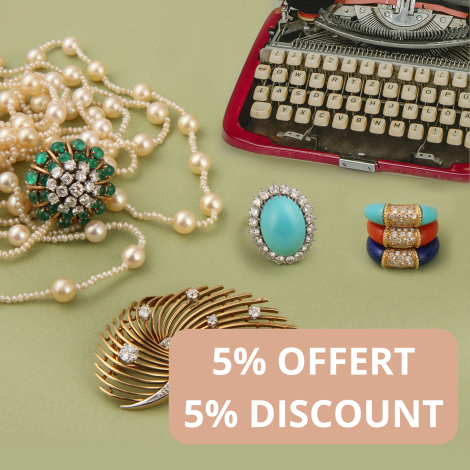Emerald Green Mint Water: The Delicates Shades Gem

Copyright The Arkenstone, iRocks.com
The emerald captivates with its unique color, somewhere between soft green and icy shades. This exceptional variety of beryl appeals to collectors for its rarity and singular beauty.
What Is an Emerald?
Gemological Definition of Emerald
The emerald is one of the best-known varieties of beryl, a gemstone typically of beautiful green color. Its name comes from the ancient Greek "smaragdos", a testament to its recognition since Antiquity. From a chemical-mineralogical perspective, emerald is a beryllium aluminum silicate (Be₃Al₂(SiO₃)₆), with a respectable hardness of 7.5 to 8 on the Mohs scale.
Like aquamarine, pale pink morganite, golden heliodor, and light green beryl, emerald belongs to the beryl family, with each variety distinguished by its specific color due to different trace elements.
History and Origins of Emeralds
Arrival in Europe
In Europe, emerald appeared around 1535, following the discovery of South America by the Spanish conquistadors. These explorers found the fabulous Colombian deposits that would revolutionize the global gemstone market.
However, ancient emeralds likely came from the Indo-Iranian region, particularly present-day Afghanistan. These historic sources were already producing exceptional gems long before the discovery of South American mines.
Main Producing Regions
Although most enthusiasts consider Colombia the source of the finest emeralds, geographic origin is not an absolute guarantee of quality. Many countries now produce very fine-quality emeralds:
Colombia: The Historic Jewel
Colombian emeralds remain the global standard, particularly those mined from the legendary Chivor and Muzo mines. These sites yield gems of exceptional deep green, sometimes with delicate shades like mint green.
Other Exceptional Deposits
Zambia: known for its blue-green emeralds
Brazil: producer of gems with varied shades
Zimbabwe: source of consistently high-quality emeralds
Afghanistan: Panjshir mines yield stones rivaling Colombian ones
Russia: historic Ural deposits
Madagascar: promising new discoveries
Specific Characteristics
Unique Color
The emerald’s green color results from the presence of chromium, a rare element also responsible for the ruby’s red hue.
Inclusions: The “Garden” of the Emerald
The extreme rarity of perfectly transparent emeralds explains why inclusions are generally accepted. These internal features, called the “garden,” act like a fingerprint, giving each emerald a unique character.
Evaluation and Quality Criteria
Treatments and Certifications
Traditional Oiling
Nearly all emeralds undergo oil impregnation to stabilize their natural fissures. This traditional treatment, accepted by the industry, makes inclusions less visible while preserving the stone’s natural appearance.
For emeralds, specimens with moderate to low oil content are preferred, as their natural clarity requires less enhancement.
Resin Treatment: To Be Avoided
Resin impregnation, unlike traditional oiling, artificially alters color through dyes. This treatment, used for lower-quality stones, must always be disclosed and is generally discouraged for discerning collectors.
Cutting and Setting Emeralds
Cutting Challenges
Emeralds are among the most difficult gemstones to cut due to their many natural inclusions. They require special expertise to bring out their delicate beauty.
The famous rectangular emerald cut, with its beveled corners, minimizes breakage risks while enhancing brilliance. This traditional technique is ideal for highlighting emerald hues.
Appropriate Settings
These pastel-toned gems pair beautifully with various metals:
White gold or platinum: enhances the purity of light tones
Yellow gold: offers elegant contrasting warmth
Rose gold: delicately complements mint tones
Trends and Contemporary Collections
Emeralds in High Jewelry
Major jewelry houses are rediscovering emeralds with delicate hues. These gems integrate perfectly into modern designs that favor subtlety and understated elegance.
Contemporary designers particularly value these stones for their ability to add a refined touch of color without ostentation, catering to clients seeking exclusivity through delicacy.
Investment and Collecting
High-quality emeralds represent a promising investment. Their increasing rarity and the shift in tastes toward subtler gems contribute to their steady appreciation in the collectible gemstone market.
Care and Precautions
Natural Fragility
Despite their decent hardness, all emeralds remain fragile stones requiring special care. Transparent emeralds in particular reveal any knocks or scratches more clearly.
Care Tips
Clean only with warm soapy water
Avoid ultrasonic and steam cleaners, which can affect oil treatments
Protect against thermal shocks
Store separately to avoid scratches
Expertise and Authentication
Importance of Certification
Every quality emerald should come with a gemological certificate issued by a recognized laboratory. This certification guarantees authenticity, indicates origin, and details any treatments.
Appraisal Services
At Les Pierres de Julie, we offer free appraisal of your emerald jewelry. Our team of experienced gemologists carefully evaluates your gems according to the most rigorous international standards.
Where to Find These Exceptional Gems
Our Exclusive Selection
Les Pierres de Julie features a carefully curated collection of emeralds. Each stone undergoes a thorough appraisal to ensure authenticity and exceptional quality.
Visit Our Boutique
Our boutique welcomes you in the heart of the Village Suisse in Paris, just steps from the École Militaire and the Esplanade des Invalides. This prestigious setting offers the ideal ambiance to discover these exceptional gems.
Whether you're interested in purchasing emerald-set jewelry, acquiring a loose stone, receiving a free appraisal, or reselling your gems, our team is here to assist you with passion and expertise.
The emerald embodies delicacy in the world of precious stones. Its rarity and singular beauty make it a preferred choice for lovers of exceptional gems.
Contact us for more information or to make an appointment.
send us an email with your photos.
Nouveautés
- 990 €
- 990 €
- Unit price
- / per
- 2.800 €
- 2.800 €
- Unit price
- / per
- 2.600 €
- 2.600 €
- Unit price
- / per
- 3.990 €
- 3.990 €
- Unit price
- / per











